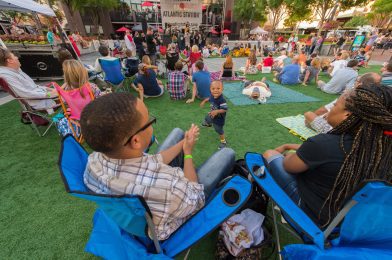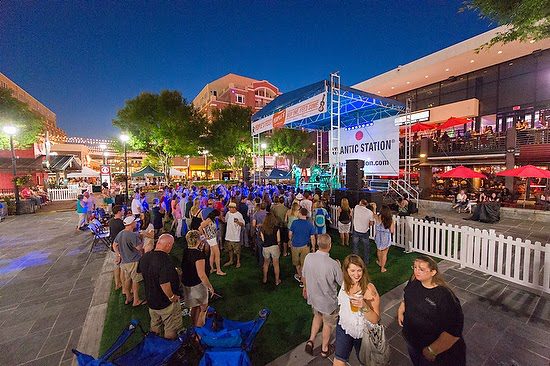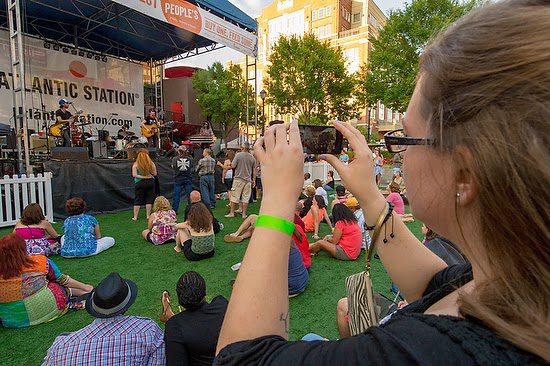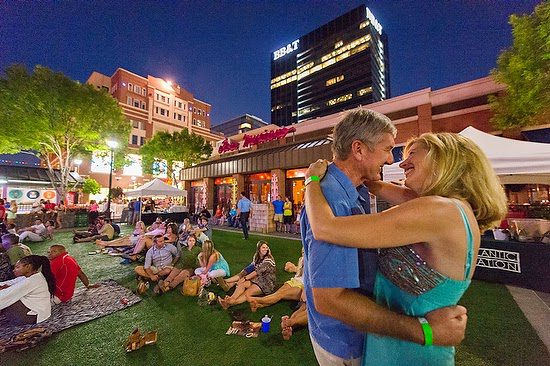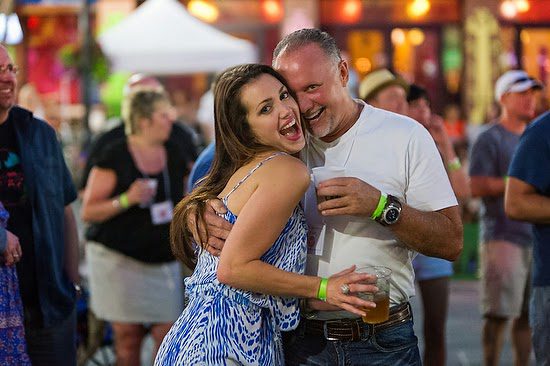Layering is one of the best techniques I know for helping to set scenes. Layering is where you have a foreground, something in the middle, and a background. For example, in this photo above, I am using layering to help engage the viewer with the little boy and the interaction with his parents in the overall concert scene.
Here is another scene setter, but notice how it is more of just a wide shot saying “here it is” rather than the above photo that engages the viewer in something going on much more effectively. The lower image has two people walking closest to the camera.
Here I am using the lady taking a photo with her phone that lets me pull the reader into the scene.
The photo I loved the most and used as the scene setter for this event is one of the couple dancing. Even without seeing the stage, the couple dancing, and people in the background facing in one direction, you can sense the band playing. Hopefully, you see the critical piece that the photo needs to be powerful enough to engage the viewer. In this photo, the romantic moment is what is engaging.
I have the couple enjoying themselves in this photo, but it isn’t a scene-setting type of photo. Yes, it captures the mood of a party, but I am missing the feeling that the earlier photos give the audience.
Here is a more cliche scene-setting photo. It establishes the location. It does so from a low angle.
Here is another way to introduce a story on Saint Martin: getting up high on the road and shooting down into the bay, where you capture the community.
Often we think of scene-setting photos as the overall shot like this of the arabica coffee growing in Salvador Urbina, Chiapas, Mexico. But sometimes, you can set the scene with a tight trial just as well.
The tight shot of the arabica coffee and the wide shot help introduce the topic of coffee being grown. So often, photographers make the mistake of trying to put everything into their scene setter and lose the impact of what the setter is doing—introducing the topic.
This photo of the fence along the border between Agua Prieta, Mexico, and Douglas, Arizona, is also a great scene setter for the story on coffee; however, using this photo starts with the reason for the report—illegal immigration.
When I think of The Citadel, I think of the pageantry of the parades. I got low with a wide-angle lens to show the beginning of the Friday afternoon parade.
Another time I went across the parade field and captured a more compressed photo with a longer telephoto lens.
Tossing the hats at graduation is another excellent scene for a story on The Citadel.
Just as significant to the graduate of The Citadel is the long gray line that the seniors do when they graduate. They form one long line and walk across the parade field for the last time.
Class of 1967, Pat Conroy immortalized the sentence “I wear the ring” in his novel The Lords of Discipline, published in 1980. So which of these photos would work for the beginning of the book The Lords of Discipline?
I think any of the three can work, and that is the point. Your establishing shot could be a closeup photo like the one of the ring and start your story just like Pat Conroy.
I like the last photo for a different reason. Most of the guys in the image picked going to The Citadel after reading The Lords of Discipline.
So you can shoot mindlessly and get over all shots that most likely will not engage the viewer, or you can work at getting overall shots that engage people.
Probably the most crucial point about finding your establishing shot is to have an idea of what the story is all about; otherwise, you will lose the overall or closeup picture you need to help set the scene because you were paying too much attention to capturing a subject or just capturing the climax of the story. Remember, you need sequences of different photos to move someone through the plot of your account.
Take the time to think about the story and how you can best establish the scene for the audience.

